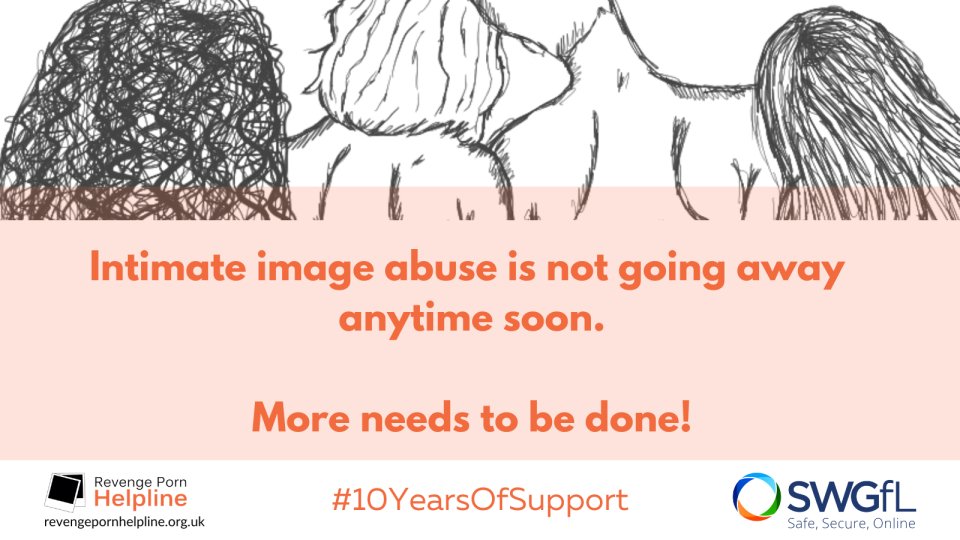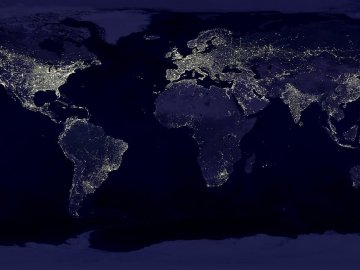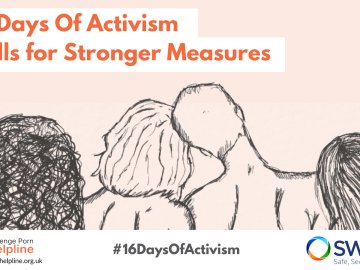After 10 years of working on the Revenge Porn Helpline I have seen the landscape of intimate image abuse change significantly. This increasingly common behaviour has now been recognised as one of most significant harms across the globe.
When I first joined the helpline, we had legislation to protect adults from having their intimate images shared online without consent. Although it was new, most people were unaware it even existed. Looking back, it was unclear whether the introduction of this law and a recently launched Revenge Porn Helpline to support victims, would have much demand. Initially, report numbers were low, only several hundred cases a year, but we suspected that this would change and what we were seeing, was only a fraction of what was actually happening.
A Concerning Landscape
And now, 10 years down the line, we are seen as one of the most impactful helplines in the UK. Over 400,000 intimate images have been reported to us, over 60,000 individual cases and an average of 57% increase in reports every year. The legislation has also significantly improved. Through advocacy and engagement with the Government, we have seen the introduction of new laws that have tightened protections for adults experiencing this harm in the UK. Public and Government awareness has significantly improved, and it seems that 10 years down the line, the UK is finally taking this form of abuse seriously.
But while we can look back and see how far we’ve come, I must continually remind myself that we are not out of the woods yet. Our annual case numbers continue to illustrate a concerning landscape – intimate image abuse is still increasing at an alarming rate and it’s not going away any time soon.
Alice’s Story
Stories such as Alice’s constantly remind me of the bleak reality we find ourselves in. Alice shared that her partner of 10 years had recently passed away after a long-term illness, leaving her devastated as she cared for him throughout his final years. While grieving, she began receiving unsettling Instagram messages claiming her nude pictures were online. Initially dismissing them as spam, Alice later received a screenshot showing her name on a porn site. Panicked and overwhelmed, she contacted the Revenge Porn Helpline. Searches uncovered intimate images were taken without her consent, shared across hundreds of sites, likely by her late partner. While feeling betrayed, Alice prioritised protecting herself and her children. The Revenge Porn Helpline supported her by reporting over 4,000 images, achieving a 90% removal rate. She has credited the Helpline with saving her life during this harrowing time.
Flawed Protections for Victims
But if the legislation is stronger and more protections are in place, why are we still here? What is keeping our phones ringing every single day, why are people still feeling scared, alone and unable to feel confident in being protected like Alice? While there are many factors that come into play here, we can narrow them down to several areas.
First and foremost, the law just isn’t strong enough. While positive moves have been made, the current legislation does not consider the wider scope of intimate image abuse. Definitions are weak and narrow, not recognising the broad range of what constitutes “intimate”: why aren’t cultural sensitivities included and why does putting emojis over a women’s breasts suddenly permit it as ok?
Scarily, perpetrator behaviours are being addressed with the threat of prosecution, but we’re still not working towards removal of the actual content. Imagine having an ex-partner be sent to jail for committing an act of intimate image abuse only for the content to remain online and be readily available to be seen by anyone? What’s even scarier is that once the perpetrator has ended their sentence, they could be given their phone back with all the pictures and videos they used to commit their crime with, still within their library. It sounds completely backwards but this is the reality we’re facing.
Getting legislation over the line is one thing, but actually enforcing it is another battle entirely. Hundreds of individuals who contact the helpline claim that the police were unable to support them during their time of need. Put it down to a lack of understanding, but if we have laws that will now prosecute those who commit intimate image abuse, why are the conviction rates so low? The threat of the law is simply not enough, police and other key stakeholders must make it their responsibility to upskill themselves in how to respond effectively to this harm. It must be a mandatory practice to train all parts of our criminal justice system on this issue so we can actually enforce the legislation we have tirelessly fought for.
We must also recognise that announcing legislative change is only a small step in the right direction. Anyone can announce that they will do something positive but until it is actually enforced, we are no further forward. We need to ask, why are we delaying things, or more importantly, why is the Government announcing changes but waiting months on end to actually put them into practice? We can’t give people false hope that they are now protected due to a vague announcement in the press that protections will be made in due course – if it’s change you want then what are you waiting for?
Intimate Image Abuse is Not Going Away
Although there has been significant engagement within this space, I am confident when I say that intimate image abuse is not going away anytime soon. Technology and behaviours will continuously evolve to allow for more ways to experience harm and judging from our own data, we expect reports to double as increasing threats such as AI continue to grow. We are fighting an ever-growing problem and the need for long-term investment in this space is more important than ever. How can the Government hope to eradicate intimate image abuse without sustaining the essential lifeline that supports thousands of individuals every year?
So what do we want to see? What will improve protections for individuals affected by this devastating harm?
- Make confirmed NCII images illegal, giving us more power to remove or block them from view
- Widen the scope around intimate image abuse definitions to protect more people from this abuse
- Stop delaying enforcement of the law
- Provide mandatory training requirements for police
- Provide long-term sustainable investment in the Revenge Porn Helpline
As part of our 10-year celebrations we will strive to see these areas be implemented within the ongoing fight against intimate image abuse. We are 10 years down the line, but we have only just begun!






